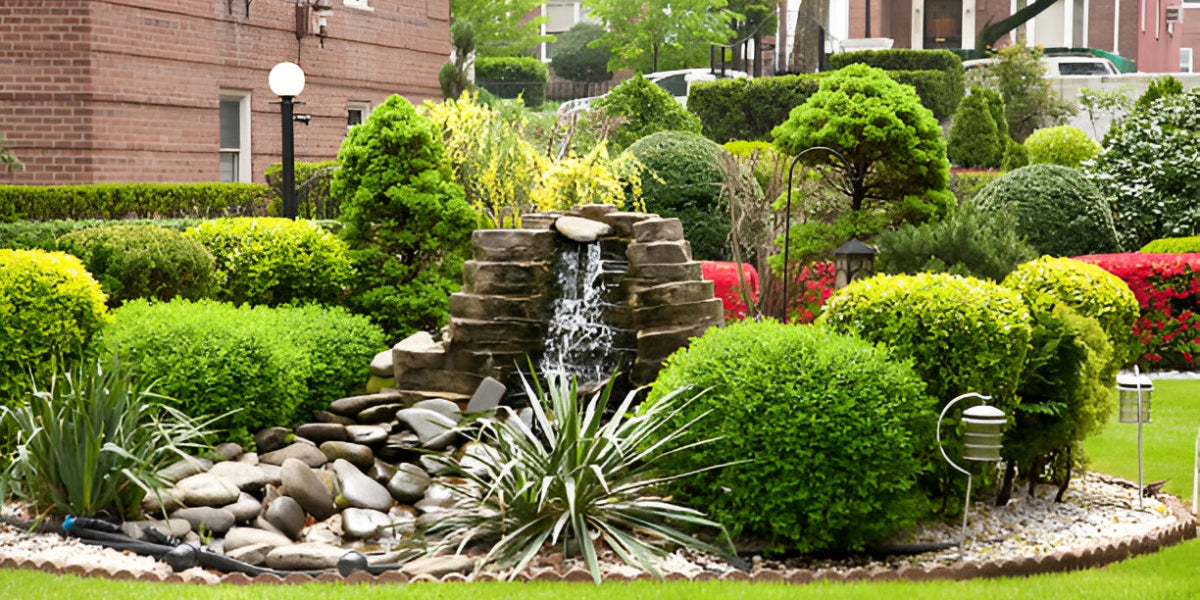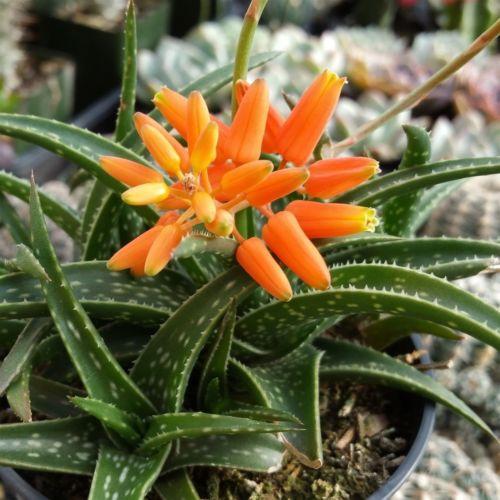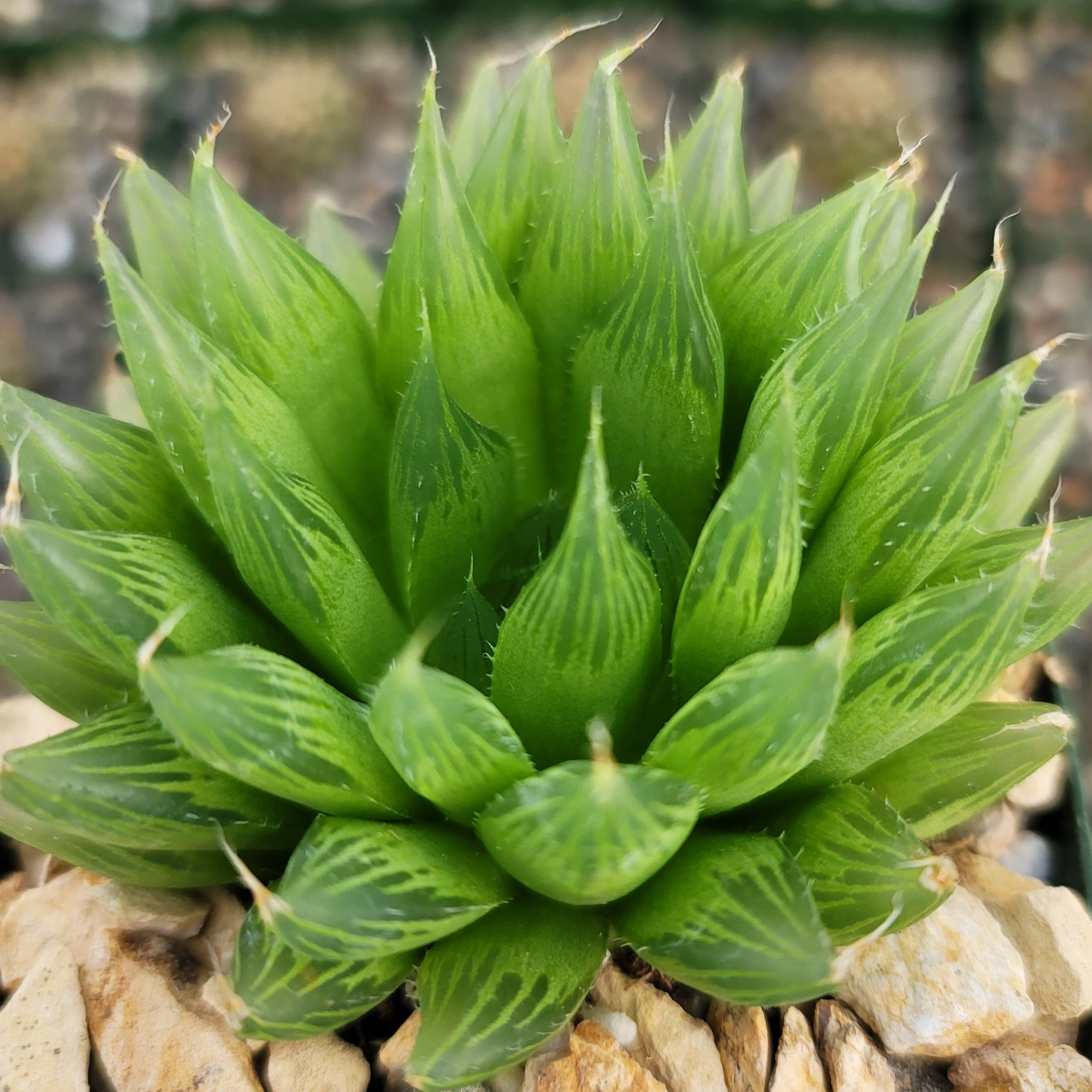Keep Your Succulents Alive: How to Care for Succulents Ultimate Guide
Updated: January 28, 2025

Succulents have become increasingly popular in homes and as office decor thanks to their unique shapes, sizes, and hardiness. They are a type of plant that stores water in its stems, leaves, or roots during drought. Succulents come in wide varieties and are easy-to-care-for plants that add character and beauty to any space. With the proper care, succulents can live for years and remain a beautiful addition to your home or office. In this guide, you'll be able to learn more about caring for succulents so that you can keep them healthy and thriving.
Here is a comprehensive guide on how to care for succulents so you can enjoy them for as long as possible!
Different Types of Succulents
Succulents have a variety of shapes, sizes, and colors. Some popular varieties include cacti, aloe vera, jade plants, echeveria, and a string of pearls. Planet Desert has the largest online selection of succulent plants online, with many different high-quality plants to choose from.
Each type of succulent requires different care instructions, so it's essential to research the specific needs of your chosen plant.

Aeonium
Aeonium is a type of succulent that can have striking colors and shapes. It is easy to care for and requires minimal maintenance. Aeonium prefers full sun but can tolerate some shade. It should be watered but not every day. You need to let the soil dry first. They prefer soil that drains well, so ensure your potting mix is amended with sand or perlite for optimal drainage. Fertilization is unnecessary. But if desired, an all-purpose cactus fertilizer can be used during the growing season (spring to fall). If planting in a container, make sure it has adequate drainage holes; otherwise, roots may rot. Aeonium needs pruning from time to time as they tend to become leggy, which will cause its leaves to fall off. With proper care, Aeonium will thrive and can be a beautiful addition to your home or office.

Aloes
Aloe is a genus of more than 500 species that contains plants native to Africa, Madagascar, and the Arabian Peninsula. These shrubs are used as ornamental flowers or houseplants. Underneath its daunting appearance, Aloes one of nature’s remedy to sunburns. Often used by many to alleviate burns, the skin heals quickly because of Aloe’s antiseptic and anti-inflammatory properties

Agaves
Agaves are a type of succulent that come in wide varieties, shapes, and sizes. Agaves do best with full sun, though they can still survive some shade. To water agaves, you should wait until the soil is completely dry before giving them a deep drink. You will want to use a container or pot with drainage holes as they need good drainage. Prune off any dead leaves for optimal health and beauty. With proper care, your agave plants will thrive and bring an exotic feel to any space.

Cacti
Cacti prefer to be placed under the sun, but they can also grow under some shade. They don't need frequent fertilization; a few times per year will suffice. It's essential to choose a pot with drainage holes so the roots don't become soggy. Otherwise, the plant may suffer from root rot. Pruning is unnecessary as cacti grow into interesting shapes over time.
Crassulas
Crassulas prefer being directly under the sun but can also tolerate some shade. They can be watered but not daily. It is vital to dry the soil first before watering again. Pruning is not necessary as crassulas tend to grow naturally in an interesting shape over time.
Echeverias
Echeverias adapt well to being under the full sun but can bear some shade and should be watered when the soil is already dry. It's important to select a pot that contains drainage holes so that the roots don't become soggy. Too much water can cause root rot. Pruning is not necessary, but it's better to remove the dead leaves just to maintain a pleasant look.
Euphorbias
Euphorbias love being under the full sun, but they can also grow under some shade. They don't need to be watered daily as well. You should prune them carefully, as the plant contains a milky sap that causes skin irritation. It's advisable to use gloves or wash your hands after pruning.
Ice Plants
Ice plants grow even under full sun, but they're also able to tolerate shade. They are low maintenance and don't have to be watered daily. For the most part, they don’t need to be fertilized frequently.

Kalanchoes
Kalanchoe's dull colors and slow growth rate make it an excellent plant for beginners. It can take two to five years before a Kalanchoe reaches maturity, but it is easy to manage when grown in good conditions. It has a wide variety of shades available, including reds, pink, and yellow whites. All you'll need now are some DIY ideas on how to display your new indoor bloomer, so they don't go forgotten about.
Portulacaria
The large, bushing, succulent Portulacaria afra "elephant bush" has woody stems that can grow to incredible heights when given the proper time and nutrients. It's also perfect for hanging baskets as an addition to color with its bluish-green leaves or white flowers during summer months.
Senecio
The large genus of plants in the daisy family, Senecio, is often called "daisies" because they bear petals similar to those found on wildflowers. However, some species within this group have been grown for years as houseplants and ground covers - even if you don't think these types ever behave like typical flowers!
How to Water Succulents
Succulents are low-maintenance plants. However, they still need proper care to thrive. The most important element in succulent maintenance is watering. Succulents should be watered in an infrequent manner which allows the soil to dry first. Ideally, you should water your succulents every other week during non-winter months when temperatures are above 40 degrees. During the winter time (when temperatures are below 40 degrees Fahrenheit) you should only water your succulent once a month because it is dormant during this time.
Don’t Over-Water Your Succulent
Overwatering can cause root rot and other issues, leading to the death of your plant. When it’s time to water your succulent, use a watering can or hose with a fine spray nozzle to ensure an even distribution of water over the entire plant. Be sure not to saturate the soil, as this can cause root rot. You may need to adjust how often you water your plant depending on the succulent's type and the climate you are in.
Remember to provide adequate drainage for all succulents, as they are sensitive to water logging. Use a well-draining soil mix that contains perlite in the potting soil when planting. Finally, ensure containers have multiple drainage holes in the bottom. If there are not enough drainage holes, add more with a drill bit or sharp object.
How to Care For Your Succulents in Winter
Succulents are best suited to warmer climates and can struggle when temperatures drop below 50 degrees Fahrenheit. You should take some preparation to ensure your succulent survives the winter. In areas where temperatures get very cold (below 40 degrees Fahrenheit), it's best to bring potted succulents indoors during winter. If that isn't an option, move them outside under covers such as on a porch, patio umbrella, or near a structure that blocks cold winds and frosty air. Meanwhile, check pots regularly for any water logging due to ice or snow buildup. Make it a habit to only water when the soil is dry. With proper care and attention, succulents can survive cold winter months and come back strong in the spring!
How to Care For Your Succulents in Summer
Remember that during hot summer months, succulents need a little more protection from the scorching sun, much like we do. Their leaves will burn when exposed to too much sun for long periods of time. We recommend keeping your succulents in a location that receives partial shade, like under an awning or a place with dappled shade from a tree. The best time of day to water your succulents is in the early morning before temperatures rise. By avoiding watering in the afternoon when temperatures are at their peak, you avoid having hot water sit in the crown of your plant, potentially burning the plant.
Healthy Temperatures for Different Succulent Plants
Although succulents can usually handle more rainfall than they’d get in their native habitat, their roots may rot if the soil stays soggy. Very few succulents thrive outdoors where temperatures drop below freezing (32 degrees Fahrenheit) for extended periods. However, there are cold-hardy varieties of succulents. They are primarily fine-leaved perennial stonecrops and hens and chicks.

Propagating Succulents from Cuttings
If you want to increase your succulent collection, propagating from cuttings is a great way to do it!
-
To propagate from cuttings, simply take a healthy cuttings or leaves and let it dry out for several days (this allows the cutting to form a callus over the wound).
-
Once dry, lightly place the cutting in a pot with well-draining cactus & succulent potting soil and water. Remember that succulents can take weeks or even months to root. Be patient and give it water when the soil has completely dried out between waterings.
-
When you see new growth, your succulent cutting is rooted and ready to be transplanted.
With time and proper care, new plants will begin to emerge from the cutting. With every new one, you could double your collection!
Common Problems with Succulents and How to Solve Them
Succulents are generally low maintenance but can still encounter a few problems. Below are some common issues among succulents and how to solve them:
- Wilting - Wilting can be caused by over or under-watering, poor drainage, or root rot. If you suspect your plant is wilting due to overwatering, let the soil dry out completely before giving it more water. If there is poor drainage or root rot, gently remove affected roots and put them in fresh soil with better drainage.
- Brown spots on leaves – This could be caused by too much direct sunlight or insufficient water. Move your succulent away from the direct sun (or filter light through curtains) and increase water frequency.
Choose a Pot With Drainage Holes
When you're selecting a pot for your succulents, make sure it has drainage holes in the bottom. This is important because excess water accumulating in the soil can cause root rot and other diseases. Too much water will also prevent oxygen from reaching the roots and cause them to suffocate. Planet Desert offers a line of succulent pots that are both stylish and functional, with drainage holes in the bottom.
Clean Your Succulents
It's a good practice to keep your succulents clean and free from dust, dirt, or other debris. This will help them get the most out of the light they're receiving. Occasionally, use a soft cloth or a paintbrush and some plain water—no soaps or detergents.
How to Get Rid of Bugs
Occasionally, you may have to deal with bugs that could be detrimental to your succulents’ health. Pests are a common problem that can occur in indoor and even outdoor plants. Fortunately, depending on what type of pest you are dealing with, there are a few inexpensive solutions to prevent damage to your succulents from bugs.
Gnats
Occasionally, you may have to deal with bugs. Gnats are attracted to succulents that are planted in soil that is too wet and doesn't have proper drainage. To get rid of gnat eggs and larvae, you can spray the soil with 70% isopropyl alcohol.
Another method to kill the gnats flying around is to make an apple cider vinegar trap. Simply put a few tablespoons of apple cider vinegar in a plastic cup. Add a couple of drops of dish soap. Cover the cup with a plastic bag. Make sure to poke a hole the same size as your finger.
Mealybugs
Mealybugs are nasty little bugs that like to eat new growth on succulents. It's difficult to say exactly what causes them to show up, but overwatering is a common cause, as well as over-fertilizing. They tend to show up on indoor plants the most as the temperatures are more temperate, but they can show up on succulents outdoors too! The treatment for getting rid of mealybugs is the same one used for larvae eggs. Use 70% isopropyl alcohol to spray your plant or q-tips to dab on the alcohol. In addition, you should move all infected plants away from other succulents.
Use the Correct Kind of Soil Mix
It's essential to use the correct kind of soil mix for your succulents. Look for one that is light and fast-draining, such as a cactus or succulent mix. A good blend will contain Canadian sphagnum, peat moss, perlite, a wetting agent, and a PH balancer.
Planet Desert carries a mix that includes all of these ingredients, including an organic substrate with mycorrhizae to help grow the root system. It includes the exact amount of inorganic media to help with adequate drainage and ventilation.
Benefits of Planet Desert’s Soil Mix
- It dries out more frequently than general-purpose, peat-based mixes
- Well suited for low-light growing conditions and high humidity
- Less difficult to overwater crops
- Reduces incidence of water-related problems (e.g. root diseases, algae, and fungus gnats)
- Holds less water for improved leaching of fertilizer salts during the crop cycle
- Provides consistent, reliable results over the long term
- Aids in keeping media pH at an optimum level
- Enables better control of water and air-holding capacity
Rotate Your Succulents Frequently
Succulents love direct sun. But, if yours is sitting in the same exact spot day after day, it's likely that only one side is getting enough light. It is advisable to rotate your plants often.
Succulents will lean towards the sun making them leggy. So, rotating them will help them grow vertically. In addition to health, rotating your succulents has an aesthetic advantage that ensures they grow upright, long, and healthy. If you tend to have leaning succulents, that may also be a sign that they need to be placed in a sunnier spot.
Take the Time to Inspect Your Plants
Take the time to look over your succulents every couple of weeks. Be sure to check for any pests, signs of root rot, or other issues damaging them. If you spot anything, address it immediately to prevent the issue from worsening.
Have Fun With Your Succulents
Last but not least, don't forget to have fun with your succulents. Experiment with different planters, soils, and locations around the house to see what works best for you. Try new styles or create a mini-garden! There's no wrong way to enjoy these fascinating little plants.
Conclusion
Caring for succulents doesn't have to be difficult, but there are some key things to note. Make sure you are providing enough light and the right amount of water. Don't forget that succulent plants can thrive outdoors in the summer and indoors during winter.
Finally, remember to give your succulents a bit of extra attention during the winter months; frosty temperatures can take a toll on them, so they need all the love and care you can give them! With these simple tips, you can ensure your succulents remain healthy and beautiful for many years. Good luck!

























